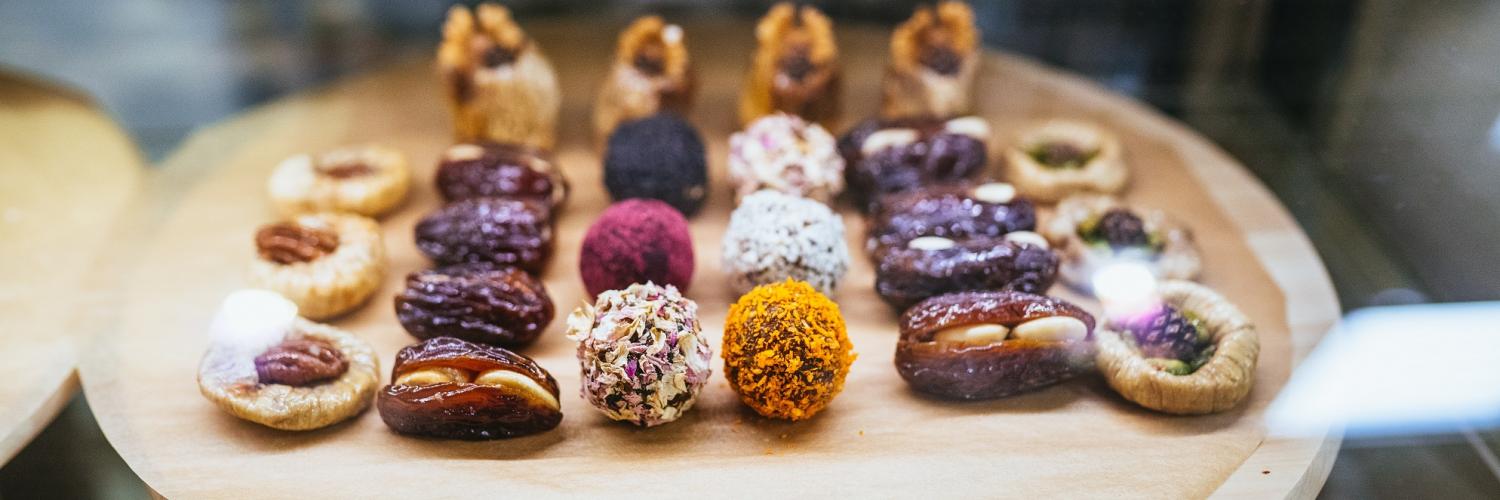
Do you know how much sugar you’re consuming each day? If you’re like the average American, chances are you’re eating 20 teaspoons of sugar a day, the equivalent of 3 cups per week.
That’s a lot, considering the American Heart Association recommends that women and children consume no more than 6 teaspoons a day, and men should aim for less than 9 teaspoons.
Bethany Lee-Lehner, director of patient education and community outreach at the University of Michigan Frankel Cardiovascular Center, wants people to understand the health dangers of sugar consumption — and where that sugar is hiding.
Many times, she says, people are shocked by what they learn.
No nutritional value
While the natural sugars found in foods such as fruits and vegetables are considered nutritional, added sugars — including white sugar, brown sugar and high fructose corn syrup — provide zero nutritional value. These added sugars, often lurking in such things as sodas, granola bars and cakes or cookies, are now clearly indicated on nutrition labels.
That’s a good thing, the experts say.
“Excessive sugar is bad for your health,” says Lee-Lehner. “It increases your risk of diabetes, heart disease, liver disease and obesity and can damage the teeth and gums as well as cause mood swings, fatigue and headaches.”
Excess sugar consumption can also speed up the aging process by damaging the skin’s elastin and collagen, causing skin to wrinkle and sag.
Cutting back on sugar, Lee-Lehner says, can result in more energy, a healthy weight and a strong immune system.
Here, she outs the biggest sugar culprits, along with some worthy alternatives to keep you healthy. Her advice comes with a warning: “The facts may surprise you.”
Thumbs down: Sugary drinks are the No.1 source of added sugar in the American diet, says Lee-Lehner.
These include sports drinks, energy drinks, sugary sodas, sweetened tea and vitamin-enhanced waters, all of which “are loaded with sugar.” In fact, a 12-ounce can of regular soda contains about 8 teaspoons of added sugar, beyond the recommended amount for the entire day for women and children.
Thumbs up: Lee-Lehner says the best beverage is water: plain, sparkling or infused with fresh fruit or herbs. She also suggests drinking coffee and tea without adding sugar, and replacing high-calorie sodas and other sugary drinks with diet versions.
Thumbs down: Sugary breakfast foods like energy bars, cereals and granola are often promoted as being fortified with vitamins and minerals, but they tend to be very high in added sugars.
Thumbs up: Enjoy a bowl of bran cereal, unsweetened oatmeal or steel cut oats. “They’re packed with fiber, vitamins and minerals and make a great low-sugar breakfast,” Lee-Lehner says.
Thumbs down: Yogurt is one of the most misunderstood products in terms of its health benefits, Lee-Lehner says. While considered a “good food,” flavored yogurt has a lot of added sugar. “With so many brands in the dairy section these days, it’s hard to know which ones are healthy. Always look at the labels and compare products to find the healthiest options.”
Thumbs up: “Plain Greek yogurt is always the healthiest choice,” Lee-Lehner says.
Because many people don’t like the taste, she recommends adding fruit to enhance the flavor, or selecting a brand that’s low in sugar.
Thumbs down: Condiments like ketchup, barbecue sauce and salad dressings are often high in added sugar.
In fact, the average brand of ketchup contains about 9 grams of sugar per tablespoon. So if you have 3 tablespoons of ketchup (27 grams), you’re consuming more sugar than if you ate a Krispy Kreme doughnut (11 grams).
Thumbs up: “Many varieties of condiments offer low-sugar options,” Lee-Lehner says. She also suggests making your own salad dressings and other condiments, always using low-sugar recipes.
In the end, Lee-Lehner admits it’s difficult to give up many of the foods you love, and she suggests practicing moderation as you work to cut back on sugar.
“It’s really about reading the nutrition labels and paying attention to the serving size and added sugars. It’s also about filling up on fruits and vegetables and being mindful of what you’re putting into your body,” she says.
Lee-Lehner believes that once you start down that healthy road, you’ll find your sugar cravings will subside.
Her advice: “Start small and see how far you can go toward reducing the amount of sugar you consume.”
Source: Michigan Medicine
Image Source: Arseny Togulev




